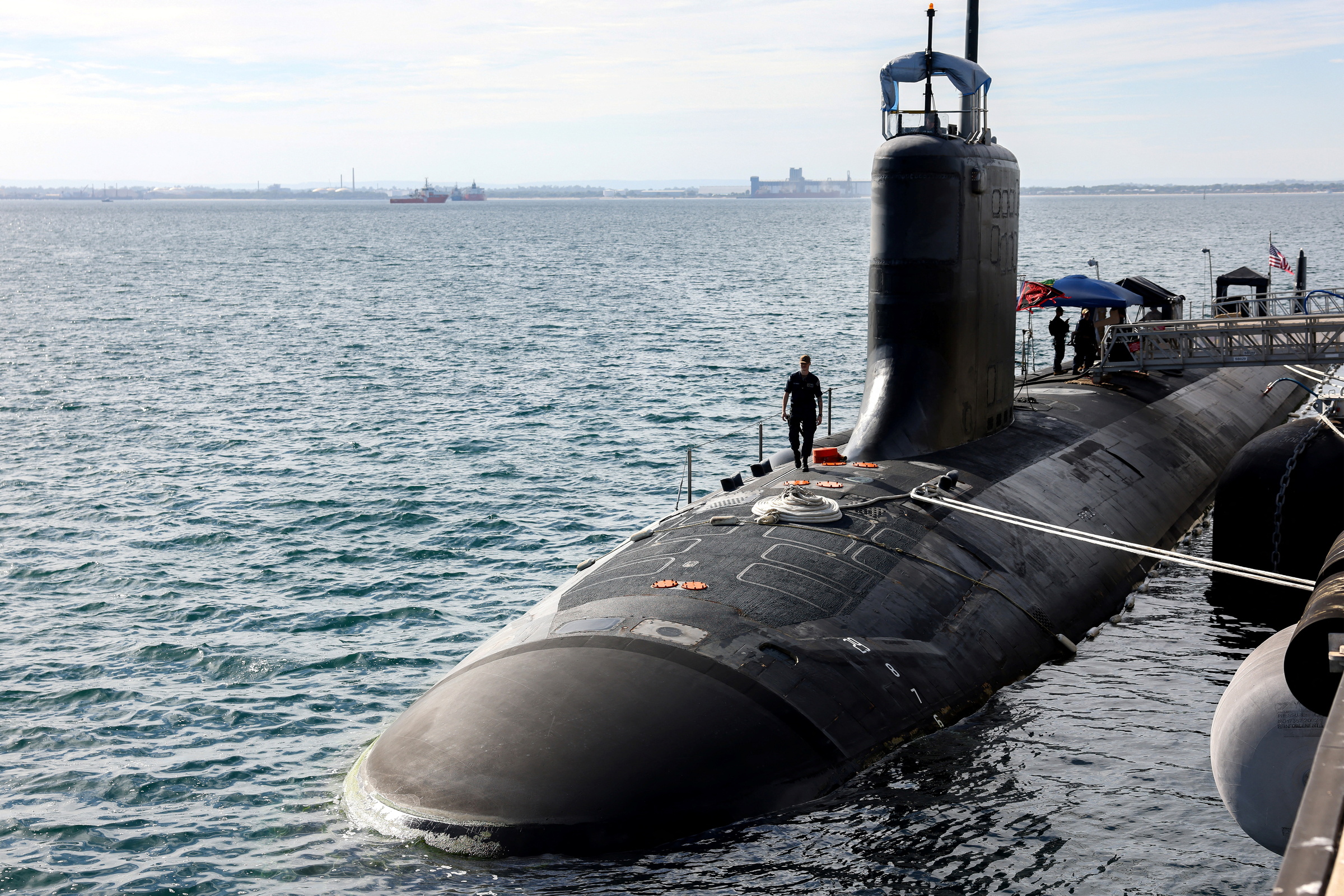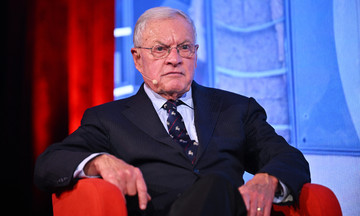Following a social media spat with Russian Security Council Deputy Chairman Dmitry Medvedev this week, US President Donald Trump announced on 1/8 the deployment of two nuclear submarines to "appropriate areas, in case these inflammatory statements are more than just words".
Earlier this week, Medvedev said Trump's threat of sanctions against Russia was "a step towards war," rejecting the US president's July 29 ultimatum giving Russia 10 days to resolve the conflict with Ukraine or face sanctions and tariffs.
"Tell Medvedev to be careful with his words. He's entering very dangerous territory," Trump posted on social media on July 31.
Less than three hours later, Medvedev responded on Telegram, referencing Russia's Perimeter nuclear deterrent system, inherited from the Soviet Union. This semi-automatic command system is designed to ensure automatic launch of nuclear weapons if the entire leadership is eliminated in a preemptive strike.
He also advised President Trump to imagine the post-apocalyptic TV series "The Walking Dead," seemingly alluding to the consequences of a nuclear war.
In a social media post on 1/8, the US president criticized this comment, warning that "words can lead to unintended consequences". "I hope this won't be one of those cases," he added.
 |
US President Donald Trump speaks at the White House on 18/7. Photo: AFP |
US President Donald Trump speaks at the White House on 18/7. Photo: AFP
The US frequently deploys strategic submarines carrying nuclear warheads in strategic waters to demonstrate its global deterrent capabilities. It is unclear whether Trump implied deploying additional submarines or why moving them to different locations would enhance deterrence, since they already carry intercontinental ballistic missiles.
An anonymous former senior Pentagon official suggested that Trump might be referring to US nuclear-powered attack submarines. These could be moved closer to Russia to counter Moscow's strategic nuclear submarines in the event of a conflict.
The US also has nuclear-powered submarines carrying Tomahawk cruise missiles capable of striking land targets. The Pentagon used this type of submarine to launch Tomahawk missiles at Iran's Isfahan nuclear facility in June.
WSJ analysts believe Trump's submarine deployment announcement isn't a military escalation between the two nuclear superpowers, but a deterrent signal to Russia.
Since the start of the war in Ukraine, Medvedev has repeatedly issued nuclear warnings to the West, declaring that Russia might be forced to use nuclear weapons in Ukraine. After each such harsh message from Russia, the Biden administration and its European allies have tended to be more cautious about military support for Ukraine, refusing to transfer long-range weapons to Kyiv for fear of direct conflict with Moscow.
However, Trump seems to believe the US cannot continue to "back down" in the face of Russia's nuclear messages and needs a correspondingly strong response.
The US currently has 71 nuclear-powered submarines, 14 of which are Ohio-class submarines carrying Trident II nuclear missiles. Observers say around 8 to 10 of these nuclear submarines are patrolling the seas at any given time.
Analysts say the US deployment of nuclear submarines is not unusual, but the Pentagon usually keeps their operations secret, as they need to remain hidden to maintain deterrence and be ready for a preemptive strike.
Therefore, Trump's announcement of "submarine deployment" is highly unusual. The Times analysts David Charter and George Grylls see this as a sign the US president is seeking a strong response to provocation.
The White House also believes Russian President Vladimir Putin will understand the nuclear submarine warning is not intended to escalate tensions, but is a deterrent and a warning that Medvedev isn't the only one who can make nuclear threats.
President Trump has always been confident he is a master negotiator. While increasingly critical of Russia, he seems to be careful not to exert too much pressure, believing his personal relationship with the Russian president remains good and they can work together.
 |
A US Navy Virginia-class fast attack submarine in Rockingham, Australia in February. Photo: Reuters |
A US Navy Virginia-class fast attack submarine in Rockingham, Australia in February. Photo: Reuters
However, many former officials and analysts have expressed concern about the White House's new statement. They believe that, even for deterrence, leaders should avoid debates about these weapons of mass destruction.
"The submarine deployment announcement certainly adds tension to the war of words between the two sides," said Jim Townsend, a former senior Pentagon official on NATO policy.
Observers worry such exchanges could potentially escalate, leading to miscalculations between the world's two nuclear superpowers.
The new post contrasts with the US president's more reassuring comments last week, in which he said he wanted to maintain limits on US and Russian long-range nuclear weapons after the New START treaty between Washington and Moscow expires in February.
"If Trump is truly concerned about Russia's nuclear weapons, he should engage in serious negotiations to maintain limits on both countries' arsenals of these destructive weapons. At the same time, the two sides could also negotiate concrete measures to avoid conflict and reduce their arsenals," said Daryl Kimball, a member of the US-based Arms Control Association.
The Federation of American Scientists estimates that by 2025, Russia will possess 5,459 nuclear weapons, while the US will have 5,177. Both countries have about 1,700 deployed strategic nuclear warheads.
"If he wants to get Medvedev's attention, Trump should provide Ukraine with new weapons. Deploying nuclear submarines is the wrong approach," noted Mike McFaul, former US ambassador to Russia.
Thuy Lam (According to WSJ, Washington Post, The Times)












